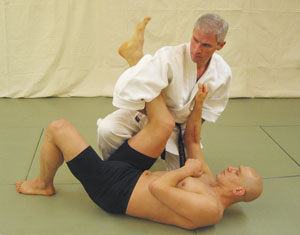- Japanese Jiu-jitsu Techniques Pdf
- Japan Jiu Jitsu Techniques
- Is Japanese Jiu Jitsu Effective
- Japanese Jiu Jitsu Techniques Youtube
- Japanese Jiu-jitsu Techniques

After around 2 months of training for the white belt, you should be ready for the red belt techniques. During this belt you will learn some more strikes and blocks. The famous hip throw will be taught, one of the most common throws in Jujitsu and Judo. Some other throws will be taught for you to understand more about how the human body works. Judo / Jiu-Jitsu Terminology A Abara - Ribs. Age Uke (揚げ受け ) - Rising block Ago (顎 ) - Jaw. Ani-deshi (兄弟子 ) - Senior student in the dojo (Lit: Big brother student) Ashi-Foot, leg. Ashi gyaku - Ankle. Ashi waza (足技・業 ) - Foot and leg techniques. Atama (頭 ) - Head. Atemi (当身 ) - Striking, Strike to a vital area. So I continued on, and even wrote a 10 page essay on why I believed BJJ was an ineffective martial art. Then, in the early 2000’s, I began training traditional Japanese Jiu Jitsu. I really enjoyed the grappling aspect, and assumed (as many do) that it was as good, or better, than Brazilian Jiu Jitsu. Shortly after earning a black belt in the. There is also an Advanced Rank RJJ tape available, it adds 15 additional techniques to your Jiu-Jitsu arsenal. Renzoku combines traditional Japanese Ju-Jitsu with some of the more effective ground fighting strategies made so popular by the Brazillians, you may flow from one technique to another, or part of another in a continuous motion.
Jim's 25 Traditional Japanese Jiu-Jitsu Throws. Saved by Susan Hines. Japanese Jiu Jitsu Jiu Jitsu Black Belt Jiu Jutsu Judo Throws Jiu Jitsu Training Jiu Jitsu Techniques Mma Fighting Hand To Hand Combat Martial Arts Training.
Fighting Stance
The fighting stance is a position to stand where you have your guard up to protect your face. You should also have one foot in front of the other, so you are nearly stood sideways on to your opponent, giving them the smallest area to hit as possible.
Gi
The clothing worn by many martial artists, loose fitting to aid in varied body movements. A Judo and Brazilian Jiu-Jitsu gi is usually much thicker than a Karate gi to stop rips when grappling.
Gracie Family
The Gracie family, originally from Scotland, were taught Jujitsu/Judo from a grand master. They then worked on the techniques modifying them where necessary to make them more effective for smaller people.
Grappling
To fight an opponent but with no punching or kicking, much like a Judo match, but the ground-fighting may continue for longer than compared to a Judo match.
Guard
If told to 'keep your guard up', this means that you should raise your hands to protect your face from any possible punches or kicks. The guard is also the name for a common position used in Brazilian Jiu-Jitsu where you are on your back, but have your opponent secured between your legs.
Jujitsu

The father of all Japanese martial arts as used by the Samurai, utilising punches, kicks, joint-locks, pressure points, throws, ground-fighting, along with a variety of weapons.
Kimono
See Gi, the more commonly used word.
Obi
The traditional Japanese term for a belt worn with a gi.
Japanese Jiu-jitsu Techniques Pdf
Rashguard
A tight fitting top worn whilst grappling, meaning that your opponent doesn't have anything to grab hold of to control your movements.
Japan Jiu Jitsu Techniques
Sensei
The traditional Japenese name for an instructor.
Stance
See fighting stance.
Strike
A punch or kick.
Submission
Is Japanese Jiu Jitsu Effective
When grappling with an opponent, it is usually the aim to make them submit by a technique which they cannot escape from, such as a choke or arm-bar. Your opponent should tap out to indicate they wish to submit.
Submission Wrestling
Much like grappling, but usually without wearing a Gi, normally just shorts and possibly a t-shirt or rashguard.
Japanese Jiu Jitsu Techniques Youtube
Tap Out
Japanese Jiu-jitsu Techniques
If you are caught in a technique that you cannot escape from, and that would result in (more) pain if they continues to apply it, you should tap your opponent to indicate you which the match to end. If you are unable to tap your opponent, you should tap the floor, with your hands or even your feet. If that's not possible, simply shouting submit can be used.